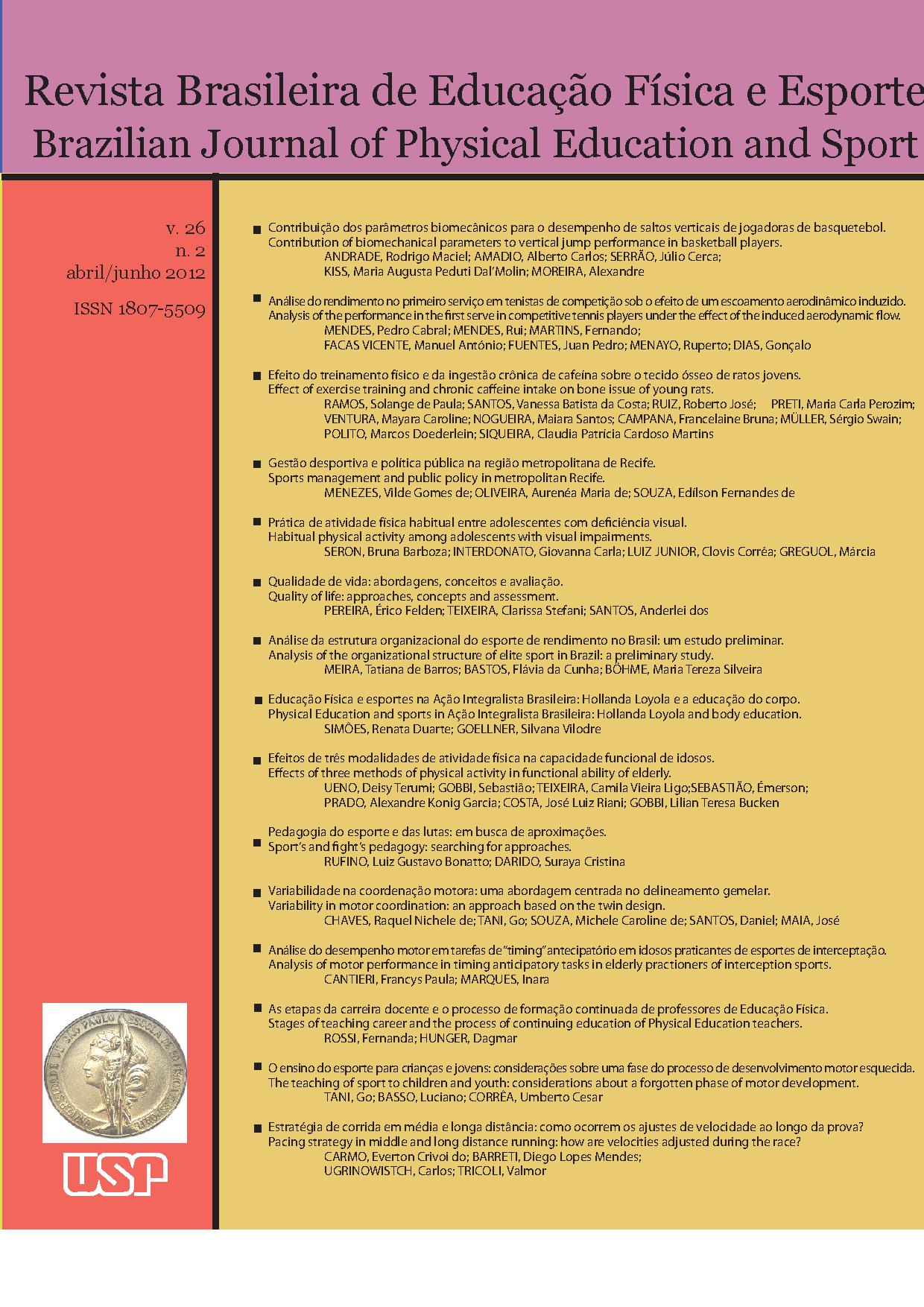Variabilidade na coordenação motora: uma abordagem centrada no delineamento gemelar
DOI:
https://doi.org/10.1590/S1807-55092012000200012Palavras-chave:
Coordenação Motora, Genética quantitativa, KTKResumo
O propósito deste estudo foi estimar a contribuição dos fatores genéticos e ambientais na variabilidade do desempenho interindividual na coordenação motora. A amostra foi constituída por 64 pares de gêmeos portugueses, com idades entre cinco e 14 anos. Avaliou-se o desempenho da coordenação através das quatro provas da bateria KTK: equilíbrio à retaguarda (ER); saltos monopedais (SM); transposição lateral (TL); saltos laterais (SL). Calculou-se o coeficiente de correlação intraclasse (t), sendo estimada a contribuição dos fatores genéticos (a²), ambientais comuns (c²) e únicos (e²). Os resultados mostram valores de t mais elevados entre gêmeos monozigóticos, sugerindo presença de fatores genéticos. Entretanto, estimativas de a² foram baixas, variando entre 15% (TL) e 41% (SM), enquanto para c² situaram-se entre 46% (SL) e 58% (TL), e para e² entre 11% (SM) e 28% (TL). Conclui-se que fatores ambientais são responsáveis pela maior parcela de influência na variabilidade do desempenho na coordenação motora.Downloads
Os dados de download ainda não estão disponíveis.
Downloads
Publicado
2012-06-01
Edição
Seção
Pedagógica e Comportamental
Licença
Todo o conteúdo da revista, exceto onde está identificado, está licenciado sob uma Licença Creative Commons (CC-BY)
Como Citar
Chaves, R. N. de, Tani, G., Souza, M. C. de, Santos, D., & Maia, J. (2012). Variabilidade na coordenação motora: uma abordagem centrada no delineamento gemelar. Revista Brasileira De Educação Física E Esporte, 26(2), 301-311. https://doi.org/10.1590/S1807-55092012000200012


